Jordanian Lamb Mansaf
By Lee Jackson ↣ Published on: October 12, 2020
This Jordanian Lamb Mansaf is one of the most impressive rice dishes I cook regularly. Fragrant rice topped with tender lamb in a yoghurt sauce and scattered generously with toasted nuts. It’s a taste and textural sensation.
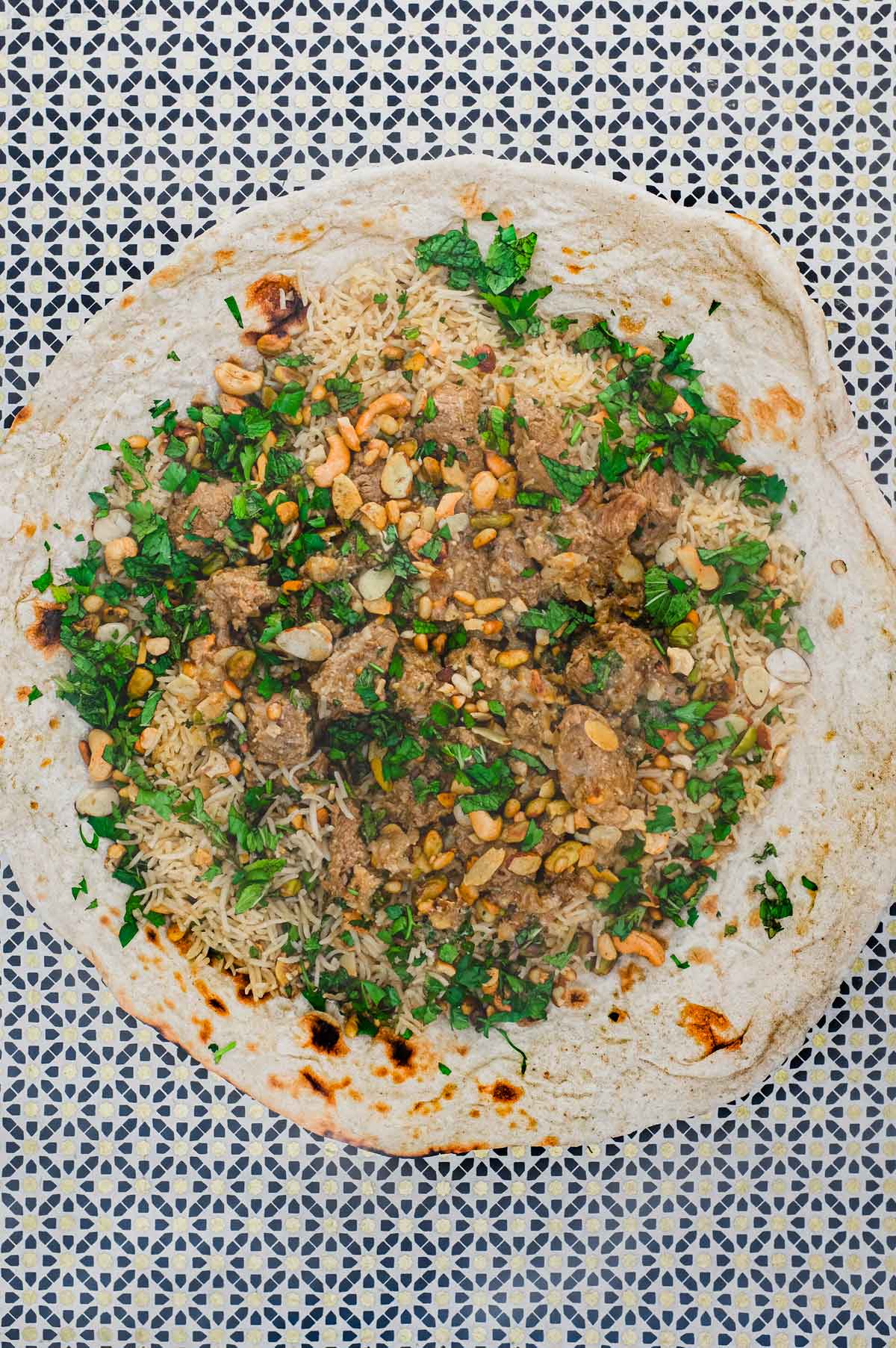
I love rice dishes, especially those cooked in stock like a pilaf or pulao - like my Moroccan silverbeet with rice. This particular recipe for Jordanian mansaf not only cooks the rice in the meat juices, it combines meltingly tender pieces of lamb (another favourite) and a bucketload of delicious nuts!
Mansaf is usually associated as a Palestinian or Lebanese dish, which it is, but the dish actually originated in Jordan and is the Jordanian national dish. It's full of flavour and texture and a wonderful centrepiece at any Middle Eastern themed table.
An authentic lamb mansaf is beautifully spiced melange of flavours and textures. It's an impressive dish, one normally reserved for special occasions. I like to think every day is a special occasion so will cook it midweek, weekend, birthdays, easter, bat mitsvahs - any excuse! I'll also cook this occasionally using bulgur wheat. I LOVE the nutty qualities of bulgur wheat. It cooks just like rice, so change it up and use bulgur if you've not tried it before.
You can cook this dish using any meat you like. Lamb, goat and beef will take around the same time to tenderise but chicken will cook quicker so adjust the recipe cooking time accordingly.
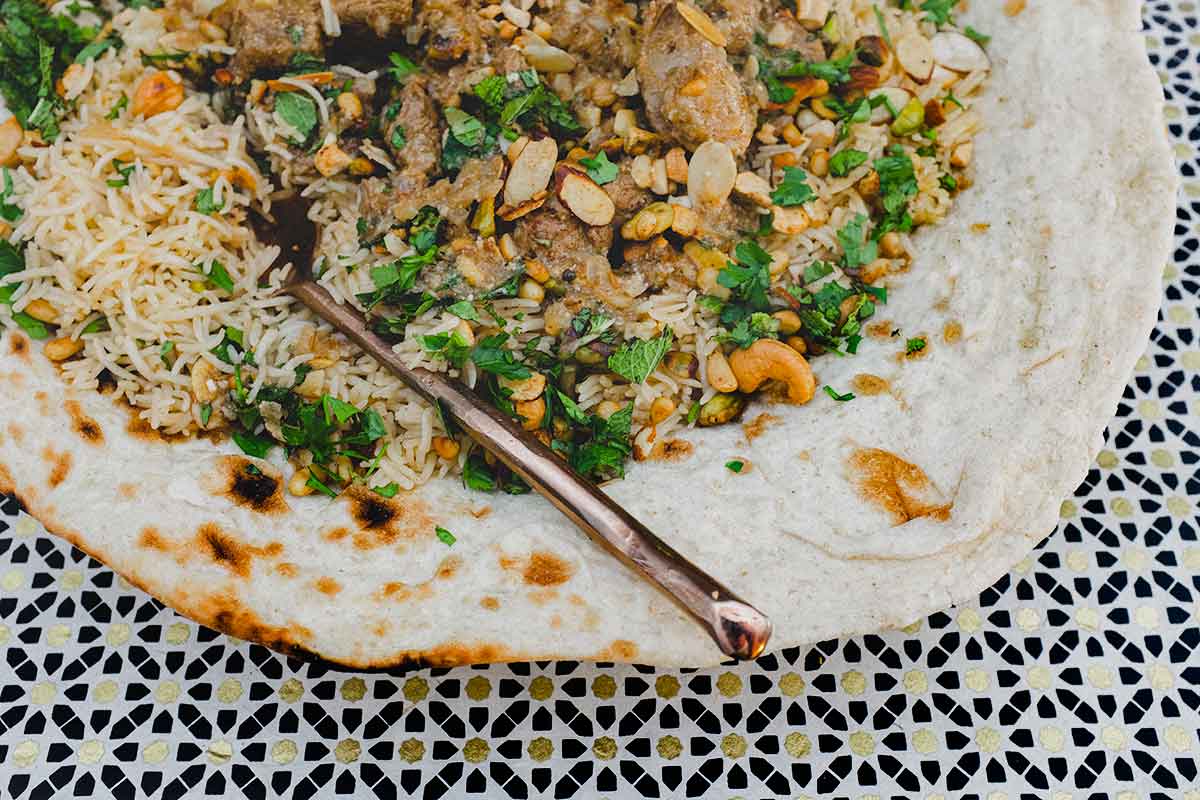
What is Mansaf?
Mansaf is a traditional Arab dish made across the Middle East. When talking about the history of Mansaf, it is agreed that the dish originated in Jordan. It's considered their national dish. Mansaf consists of meat cooked with basmati rice or bulgur wheat, yoghurt and spices. The dish is finished with an array of nuts like pistachio, pine nuts, cashews, walnuts and almonds. The sauce, or 'jameed' coats the meat and served with the meat. There is often excess jameed that is served alongside the mansaf for guests to add as they wish.
Why it works?
Eat the plate! - Mansaf sits on a huge flatbread called a 'shraak', which acts as both the serving vessel AND part of the meal itself! Who doesn't love the idea of eating the food and the serving dish!!?
It's a nutty & meaty plate of food - Mansaf is hearty and filling with lots of contrasting flavours and textures. It's a cornucopia of delights for the palette!
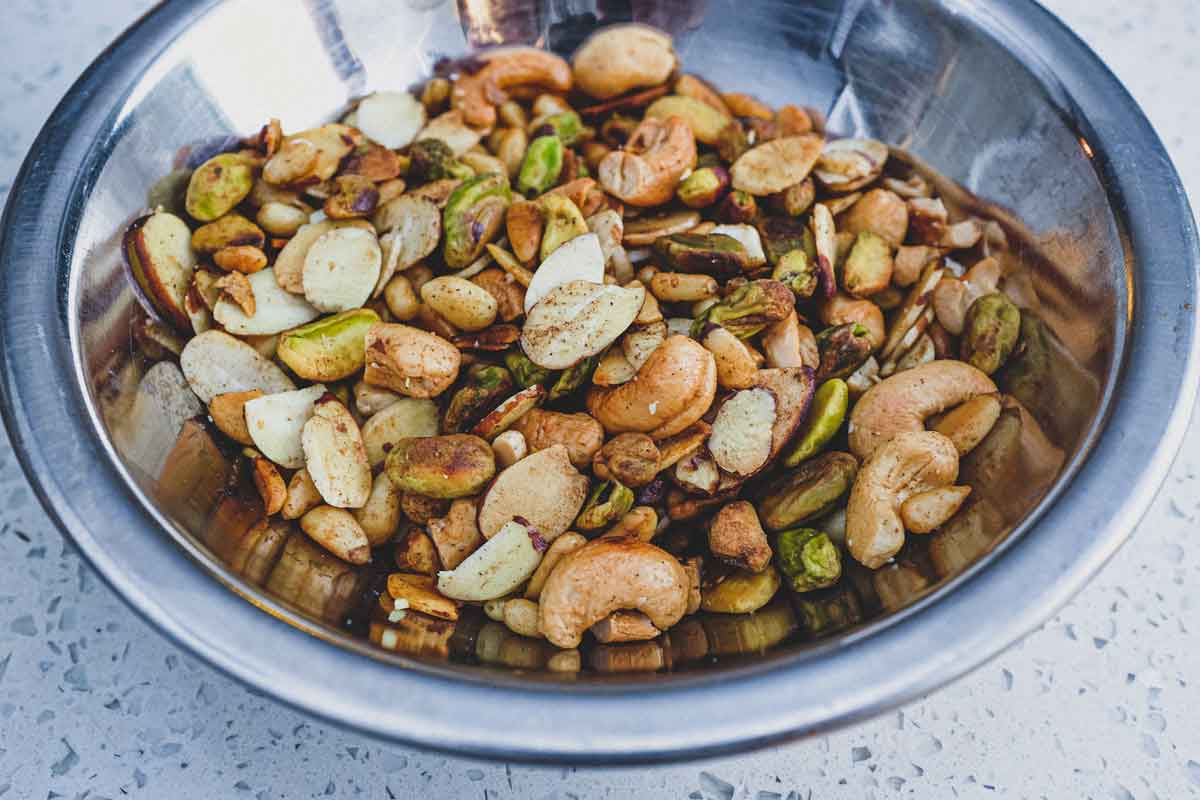
Stuff You'll Need
There are a fair few ingredients to the Mansaf, but it's all worth it for the flavour!
- Lamb - I use boneless lamb shoulder or leg. You can use goat too.
- Jameed - Jameed is a Jordanian fermented yoghurt with a sour taste - I buy mine in liquid form (often called 'soup starter') but it is also available as a dried ball which you must reconstitute yourself with water - use whichever you can find.
- Yoghurt - I use regular natural yoghurt as well as jameed for a milder, sour note.
- Basmati rice - the rice is cooked in the lamb cooking liquid as a fragrant pilaf.
- Spices - there's a lot of flavour in mansaf and it's thanks to fragrant: cumin seeds, cinnamon, cardamom and bay leaves.
- Onion and garlic - bring a little backbone to the dish
- Nuts - it's a festival of crunch with pine nuts, pistachios, almonds and cashew nuts.
- Herbs - I like to use both fresh parsley and mint. If I don't have fresh herbs I'll use dried mint or dill.
- Flatbread - I am close to an excellent middle eastern store that sells the huge "shraak" bread for mansaf, but you can use small flatbreads, pita or whatever flatbreads you can get your hands on.
What is Jameed?
Jameed, integral to Levantine cuisine, especially in Jordan, is crafted from fermented sheep's milk. Initially salted, the milk undergoes fermentation, developing a distinct tang and texture. This process imbues it with a rich, complex flavour profile, characteristic of jameed. The fermented milk is then shaped into hardened balls or discs and dried, ensuring long-term preservation while intensifying its flavours. It is also available in liquid form, known as "laban jameed".
This sauce serves as the foundation for various dishes, with the iconic mansaf at the forefront. In this celebrated Jordanian dish, tender lamb is simmered in a luxurious broth infused with rehydrated jameed, then served over rice, garnished with nuts and herbs.
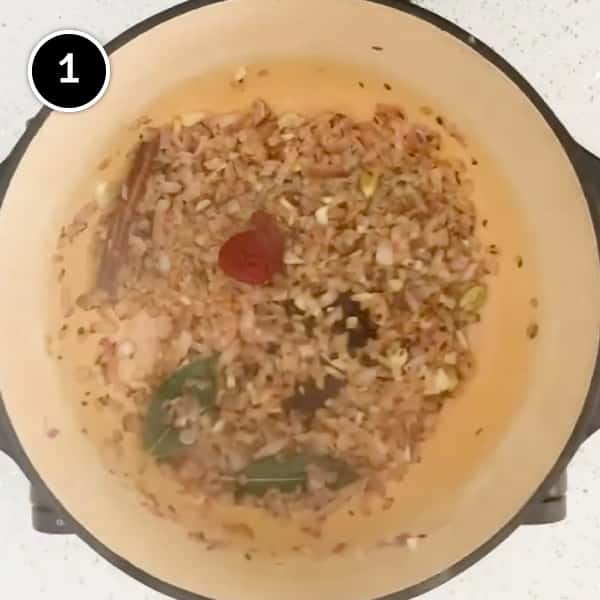
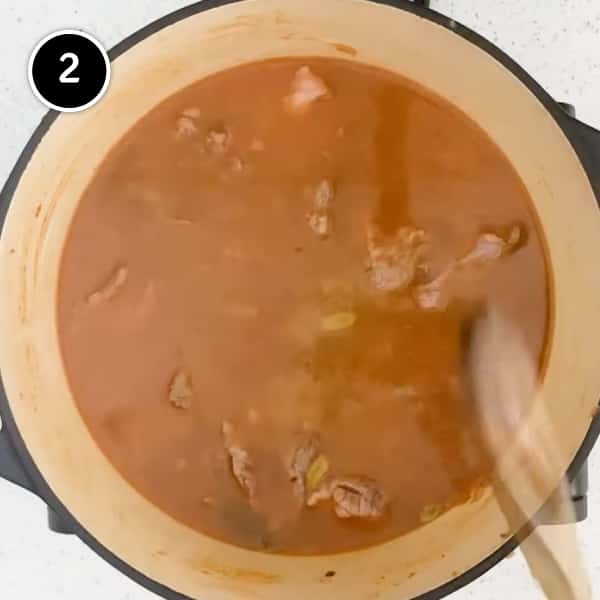
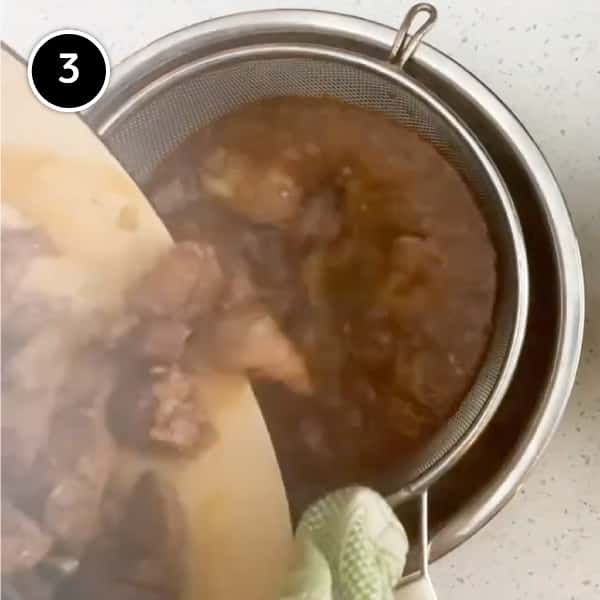

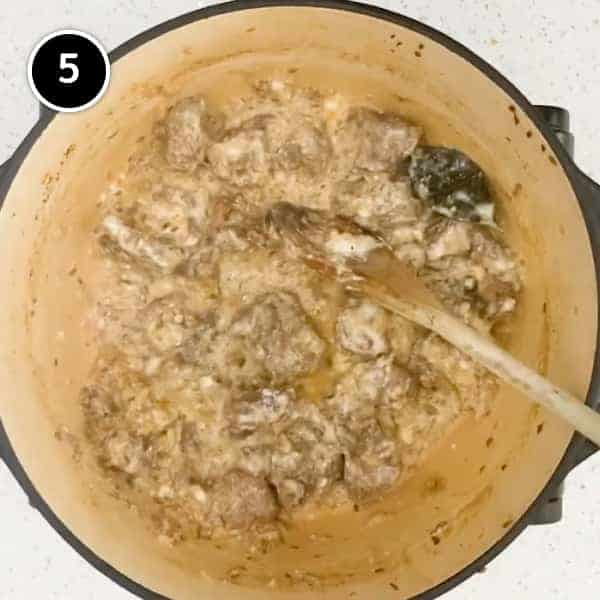

Step by Step
Making mansaf is actually a simple affair. There are a few steps but nothing too taxing. Here's a breakdown of how your time is spent.
- Prep - Clean the rice - Rinse the rice in cold water 2-3 times until the water runs clear. Cover with water and leave to soak.
- Prep - Fry the nuts in 1tbsp oil or butter until lightly browned. Drain on paper towels and set aside to cool completely.
- Step 1 - Heat the butter in a large pan and then gently fry the onion, cumin seeds, cinnamon stick, bay leaves, cardamom for 3-4 minutes before adding the garlic then the tomato puree and stirring well.
- Step 2 - Add the lamb and cook for about 5 minutes to lightly brown. Pour in the jameed and 4 cups of water and bring to a simmer. Reduce the heat and cover the pan. Cook gently for 90 minutes until the meat is tender.
- Step 3 - Strain the lamb through a sieve and retain all the liquid.
- Step 4 - Add 2½ cups of the cooking liquid into a fresh pan along with a little salt & pepper and bring to a simmer. Drain the rice then add to the lamb liquid and stir only once. Reduce the heat to very low. Cover the pan and simmer very gently for 15 minutes until all the liquid has been absorbed. Remove from the heat, place a clean tea towel over the pan and then place the lid on top. The towel catches the excess steam and makes fluffier rice. Leave for 30 miniutes.
- Step 5 - Combine the lamb and all that was strained with it (discard the cinnamon stick) in a saucepan with the yoghurt and the remaining cooking liquid. Season with salt & pepper and simmer gently for 10 minutes.
- Step 6 - Arranging the dish - if you managed to get hold of a large bread then place that on a large serving platter. If not, make a bed of smaller flatbreads to form one large surface. Turn out the rice and spread over the bread in a thick layer. Top with the lamb and a little sauce. Scatter over the nuts and fresh herbs. Serve hot, with more of the yoghurt sauce on the side.
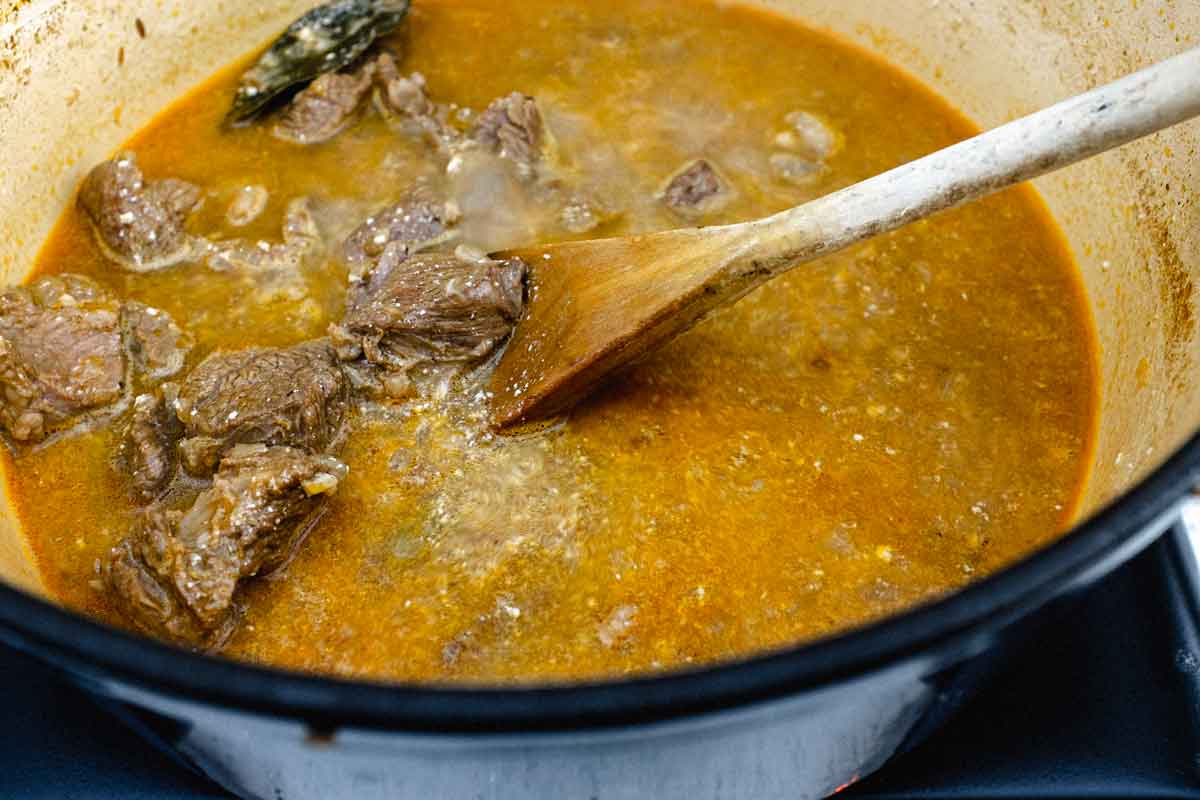
Helpful Tips
- Substitute Jameed - Jameed brings the authentic flavour here, but if you are unable to find this where you live, don't worry too much - use regular yoghurt as a substitute - it's not quite as authentic, but still delivers a tasty dish.
Serving & Storage Suggestions
Serving mansaf on bread is traditional, but if you prefer, simply serve the meat and the rice from from separate pans and use bowls or plates.
- Leftovers fridge - leftovers may be kept in the fridge in airight containers for 3-4 days in the fridge (the bread will be soggy, so either don't store as a leftover or eat it soggy!
- Freeze - You may freeze the meat in the sauce and the rice separately for 3+ months in airtight containers. Reheat separately in the microwave and arrange the dish as normal when everything is piping hot.
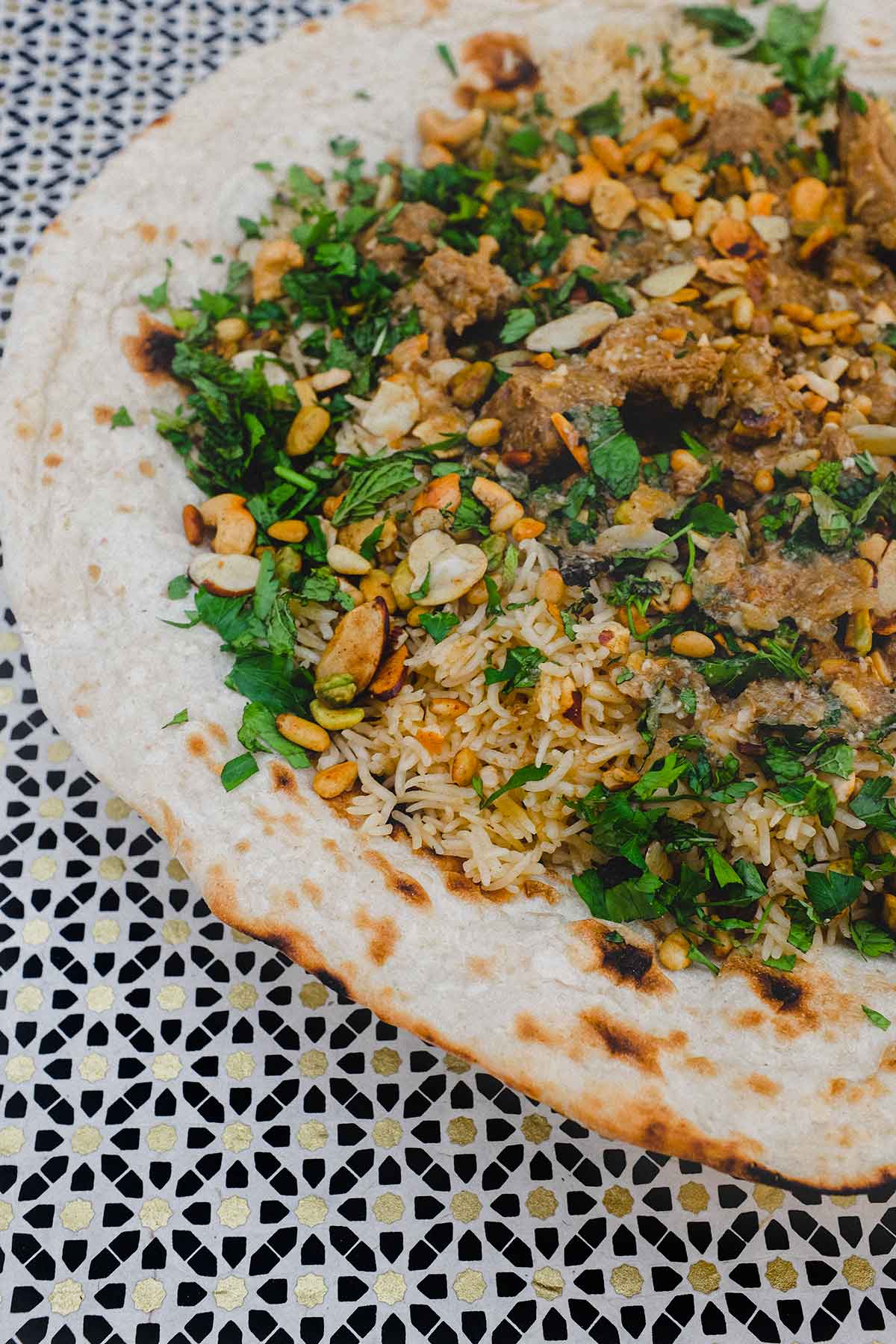
Ready to get cooking?
Mansaf really is a celebration of everything! Flavour, fragrance, colour and texture - it's little wonder it's so celebrated in Jordan, and it's the perfect dish for a celebration of your own. Nothing looks more impressive than a giant mound of the rice with lamb atop. It's truly a memorable dish to make at home.
It may look like a lot to prepare, but in essence it's actually really easy to make at home. I urge you to try and see for yourself! Hope you enjoy!
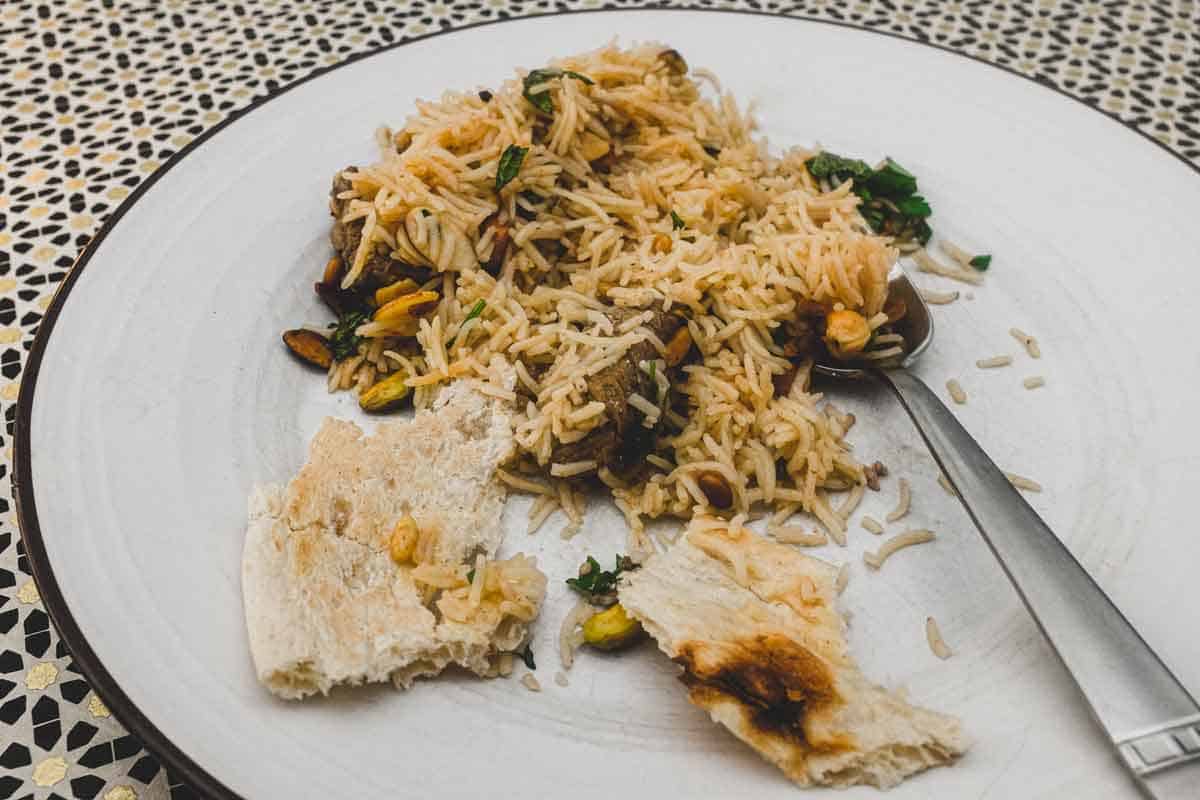
More Middle Eastern recipes
If you liked my Lamb Mansaf recipe, then you must try one of my other delicious Middle Eastern Recipes:
- Moroccan Matbucha – Tomato & Pepper Salad
- Zaalouk (Moroccan Eggplant Salad)
- Hawaij Spice (Spice mix from Yemen)
- Palestinian Zucchini Dip
- Hummus Bi Arnabeet – Hummus with Roasted Cauliflower
- Lamb & Eggplant Fatteh
- Middle Eastern Lamb Kebabs (Kabobs)
- Eggplant With Tomato Sauce & Pine Nuts
- Roast Duck with Zaatar
- Chicken Pilaf
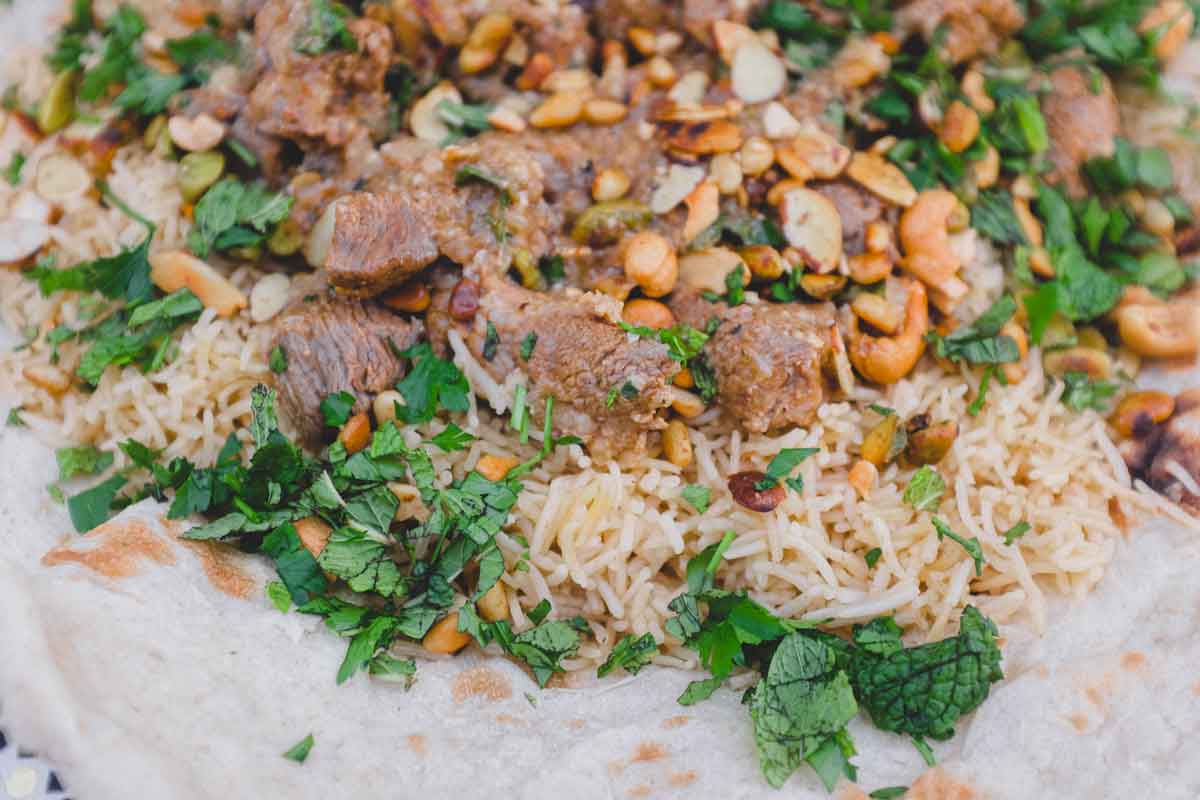
Any Questions? (FAQ)
Have a question about lamb mansaf? Let me know in the comments.
You can use either, both are authentic in middle eastern recipes. Bulgur wheat will add to the dish a nutty flavour. Use coarse bulgur wheat for this recipe.
Basmati rice will give the most authentic results. The rice should be fluffy and separate into single grains. I suggest soaking your basmati for 30 minutes in cold water then rinsing to remove the excess starch. This will give the best results. If possible, go for the best quality basmati.
Mansaft is a typical Bedouin dish, normally reserved for large gatherings or celebrations but obviously for the regular non-bedouin we can serve it family style for whoever happens to be at our table.Typically Bedouin eat from a large platter or sheet of flatbread in the centre. Each person will mark their spot on the mountain of food and eat with their hands from that area. Again, this might not sit well with western folks, so by all means supply spoons to help guests serve up or serve up portions yourself. Authenticity is nice to know, but not essential!
What is Jameed?
Jameed, a traditional Levantine dairy product, is made from fermented sheep's milk. It's dried and used to add tanginess and richness to dishes, commonly found in Jordanian cuisine.
This recipe uses affiliations and may receive a commission based on your activity (link clicks). Learn more.
Video Recipe
Ingredients
- 2 tbsp unsalted butter (or olive oil)
- 1 onion (finely chopped)
- 1 tsp cumin seeds
- 1/2 cinnamon stick
- 4 cardamom pods
- 2 bay leaves
- 4 garlic cloves
- 2 tsp tomato puree
- 1.4 lb lamb shoulder (600g) cut into large chunks
- ½ cup Jameed soup starter
- ½ cup Greek yoghurt (plain)
- salt & pepper
- 1 cup Basmati rice or coarse bulgur wheat
- 1/4 cup pine nuts
- 1/4 cup cashew nuts (unsalted)
- 1/4 cup pistachio nuts (unsalted)
- 1/4 cup sliced almonds
- 1/4 cup fresh parsley (chopped)
- 1/4 cup fresh mint (chopped)
Instructions
- Rinse the rice in cold water 2-3 times until the water runs clear. Cover with water and leave to soak.
- Fry the nuts in 1tbsp oil or butter until lightly browned. Drain on kitchen paper and set aside to cool completely.
- Heat the butter in a large pan and then gently fry the onion, cumin seeds, cinnamon stick, bay leaves and cardamom for 3-4 minutes before adding the garlic then the tomato purée and stirring well. Fry for 1-2 minutes.
- Add the lamb and cook for about 5 minutes to lightly brown. Pour in the jameed and 4 cups of water and bring to a simmer. Reduce the heat and cover the pan. Cook gently for 90 minutes until the meat is tender.
- Strain the lamb through a sieve and retain all the liquid.
- Add 2½ cups of the cooking liquid into a fresh pan along with a little salt & pepper and bring to a simmer. Drain the rice then add to the lamb liquid and stir only once. Reduce the heat to very low. Cover the pan and simmer very gently for 15 minutes until all the liquid has been absorbed. Remove from the heat and take off the lid, place a clean tea towel over the pan and then place the lid back on top. (The towel catches the excess steam and makes for fluffier rice.)Leave for 30 minutes.
- Combine the lamb and all that was strained with it (discard the cinnamon stick) in a saucepan with the yoghurt and the remaining cooking liquid. Season with salt & pepper and simmer gently for 10 minutes.
- Arranging the dish - if you managed to get hold of a large flatbread then place that on a large serving platter. If not, make a bed of smaller flatbreads to form one large surface.Turn out the rice and spread over the bread in a thick layer.Top with the lamb and a little sauce. Scatter over the nuts and fresh herbs. Serve hot, with more of the yoghurt sauce on the side.
Notes
- Leftovers fridge - leftovers may be kept in the fridge in airight containers for 3-4 days in the fridge (the bread will be soggy, so either don't store as a leftover or eat it soggy!
- Freeze - You may freeze the meat in the sauce and the rice separately for 3+ months in airtight containers. Reheat separately in the microwave and arrange the dish as normal when everything is piping hot.
Nutrition
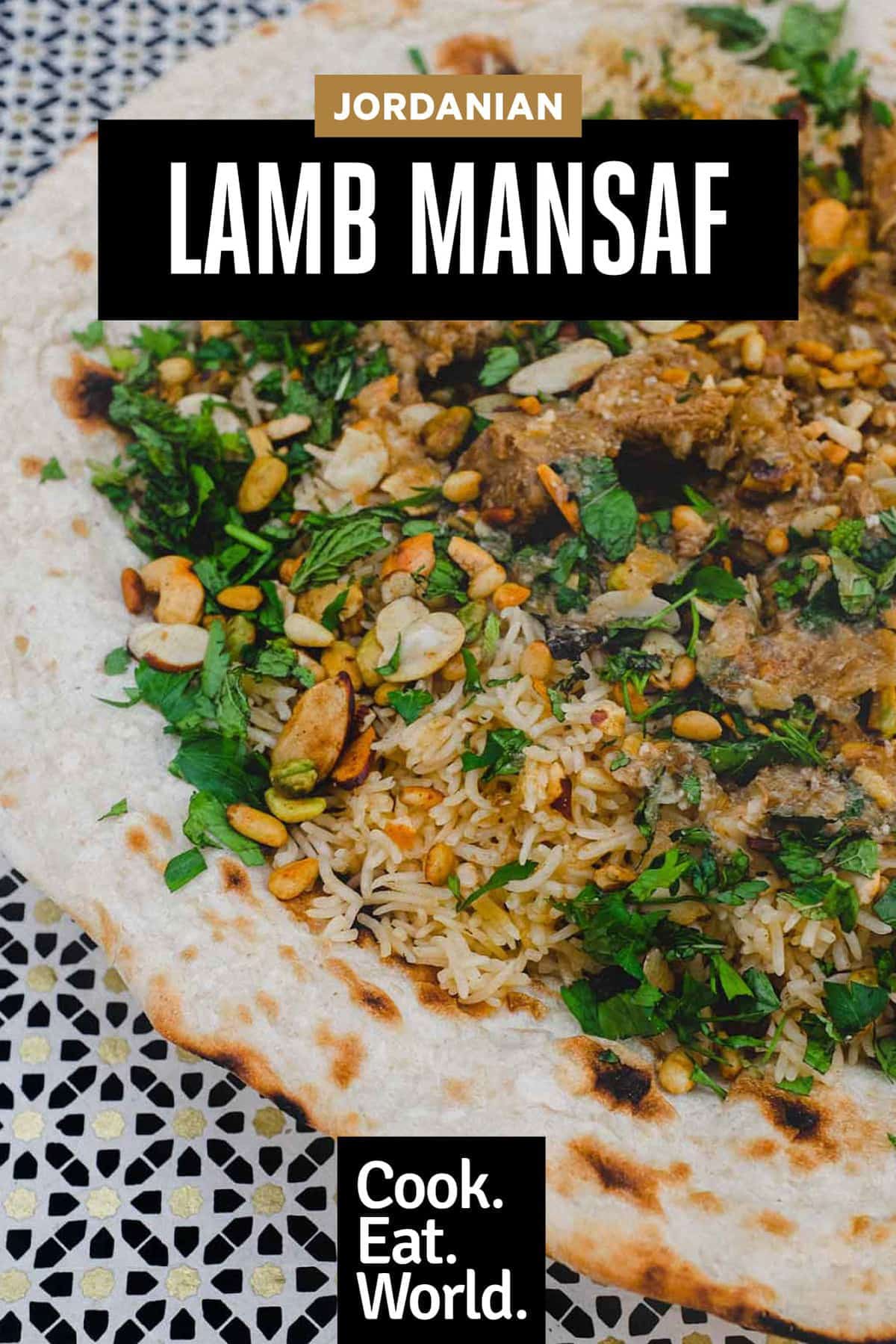
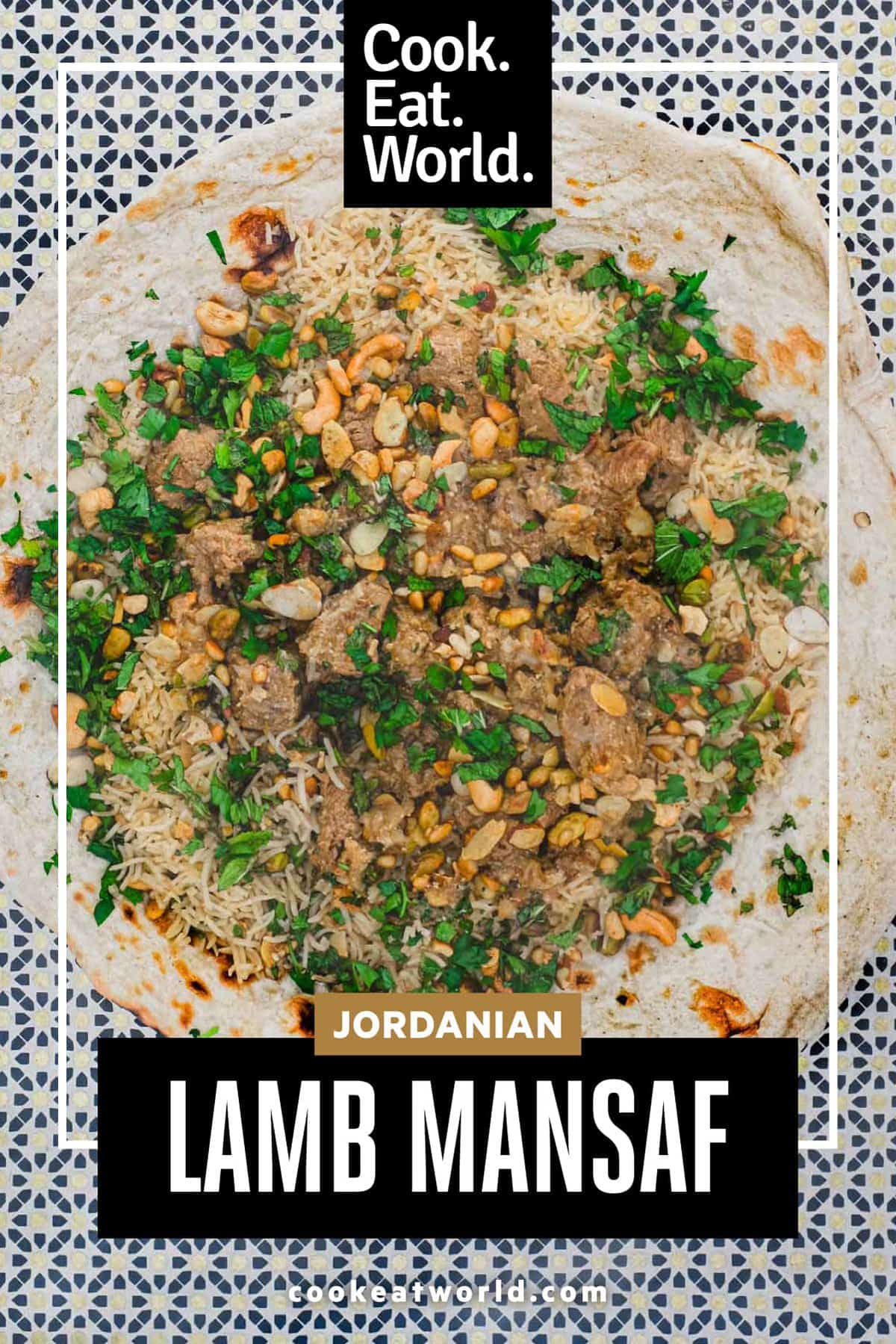
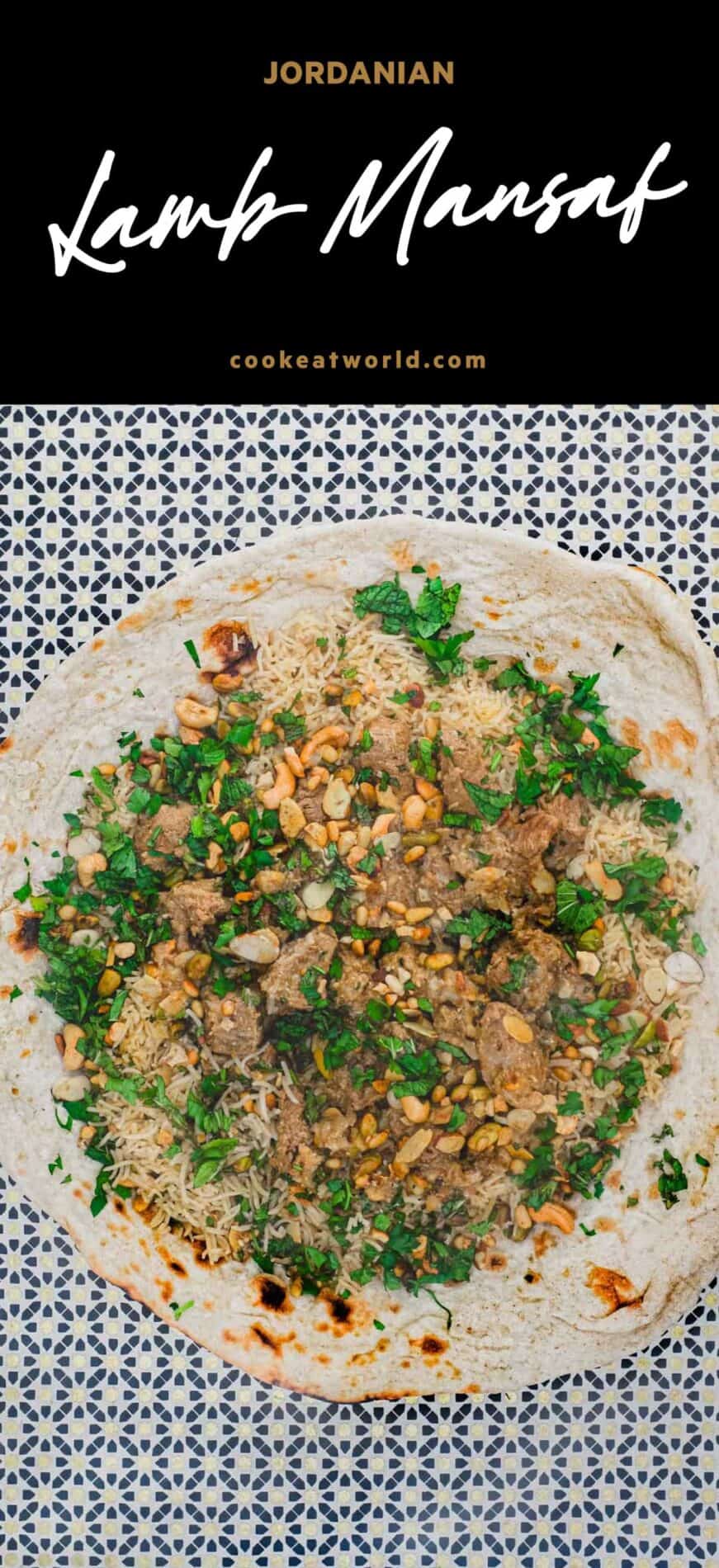
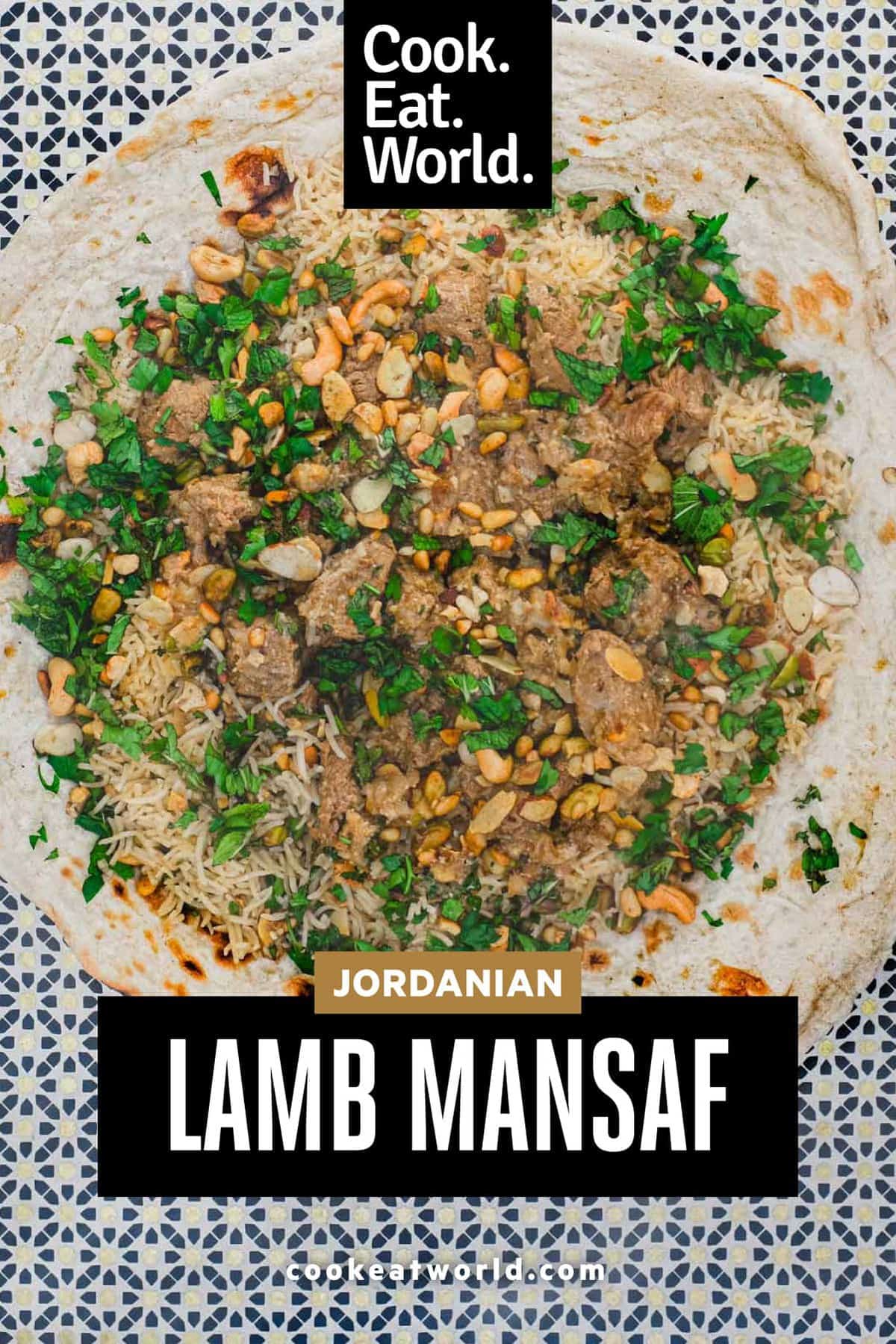

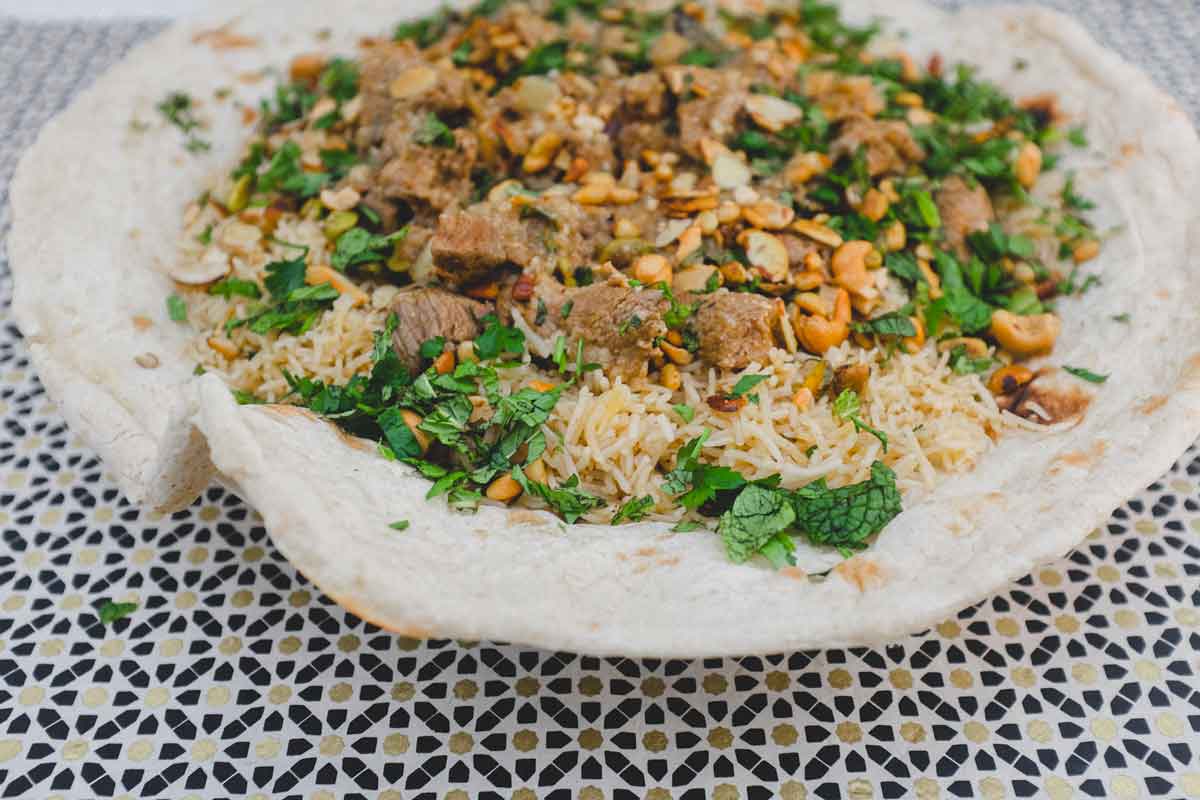
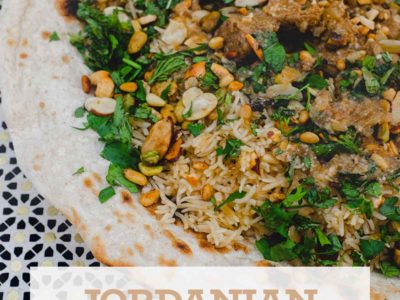
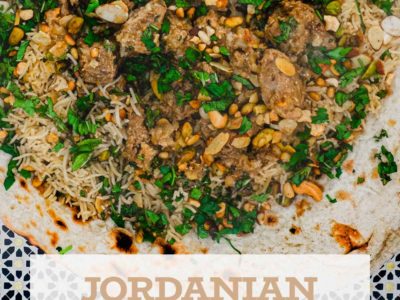
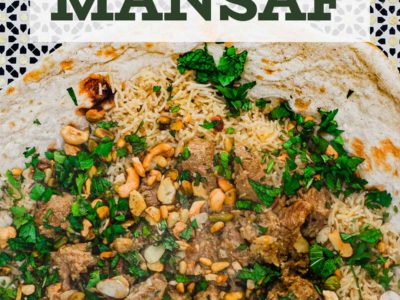
Can you freeze this dish?
Technically, yes. I would freeze (without the bread element) in single portions, but it may dry our slightly during reheating, so add a little water. Microwave would be best.
I’d say that it’s much better enjoyed fresh though.
Hi there. Sounds great. When you are steaming the rice with the tea towel is the stove still on low or off please?
Hi Nita,
No – the heat is off. Sorry – I should have noted that in the recipe – I’ll change it to be clearer. Thanks for alerting me! :)
Thanks for the reply. I’m going to get the goodies this week and give it a go! Will let you know how it turns out. Thanks for sharing :)
This could be anything but mansaf.
Not sure if this is a good or bad review, but thanks either way!